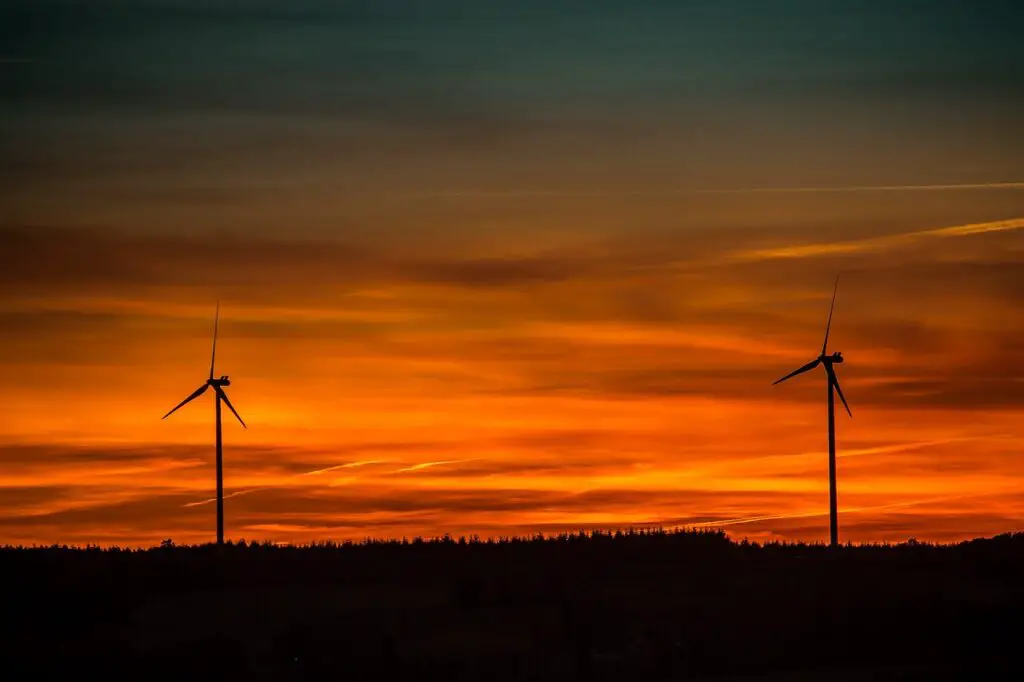Wind turbines are a crucial renewable energy source that harnesses the power of the wind to generate electricity. However, like all mechanical systems, they are subject to wear and degradation over time.
One common issue wind turbines face is blade wear, which can significantly impact their efficiency and increase maintenance and repair costs.
This article will delve into the causes of wind turbine blade wear, its impact on wind turbines, and strategies for preventing it.
What factors contribute to wind turbine blade wear?
Several factors can contribute to wind turbine blade wear. One of the primary causes is corrosion and weathering.
As wind turbine blades are exposed to the elements, they can be subjected to harsh conditions such as rain, snow, and extreme temperatures.
Over time, these conditions can lead to the blade materials’ corrosion, weakening the structure and making it more prone to damage.
In addition, UV radiation from the sun can cause the blade materials to break down and become more brittle, leading to cracks and other forms of damage.
Can mechanical stresses from wind and movement lead to blade wear?
Mechanical stresses from wind and movement can also cause wind turbine blade wear. When a wind turbine operates, the blades are subjected to constant stresses as they rotate and generate power.
These stresses can cause fatigue in the blade materials, leading to cracks and other forms of damage.
Additionally, the movement of the blades can cause wear on the bearings and other mechanical components, which can further contribute to blade wear.
Are manufacturing defects a potential cause of wind turbine blade wear?
Manufacturing defects can also be a factor in wind turbine blade wear. If a blade is not manufactured to the proper specifications, it may be more prone to damage and wear over time.
This can be caused by various factors, including poor quality control, faulty materials, or improper assembly techniques.
The Impact of Wind Turbine Blade Wear on Efficiency and Costs
The impact of wind turbine blade wear on wind turbines can be significant. As blades wear, they become less efficient at generating power, leading to reduced output and increased operating costs.
This can be especially problematic in cases where wind turbines are located in areas with high wind speeds, as the increased mechanical stresses can accelerate blade wear.
In addition to reduced efficiency, wind turbine blade wear can also increase maintenance and repair costs. If a blade becomes damaged or fails, it needs wind turbine repair and replacement, which can be expensive and time-consuming.
What are the potential safety risks associated with wind turbine blade wear?
Finally, wind turbine blade wear can also present safety concerns. If a blade becomes damaged or fails, it can break off and fall from the turbine, posing a risk to people and property on the ground.
Additionally, blade failure can also cause the wind turbine to shut down, which can have an impact on power grid stability.
Preventing Wind Turbine Blade Wear through Maintenance and Design Improvements
What maintenance practices can help extend the life of wind turbine blades?
So, what can be done to prevent wind turbine blade wear and ensure the long-term viability of wind energy? One key strategy is to implement regular maintenance and inspections for wind turbine blade wear.
By performing regular inspections, wind turbine operators can identify potential issues early on and take steps to address them before they become more serious.
This can include cleaning and lubricating bearings and other mechanical components and applying protective coatings to the blades to help prevent corrosion and weathering.
What materials and coatings can increase wind turbine blade durability?
Another strategy to prevent wind turbine blade wear is using durable materials and coatings. Various blade materials are available, each with its own set of properties and characteristics.
Some materials, such as fiberglass reinforced plastics (FRPs), are highly resistant to corrosion and weathering, making them well-suited for use in wind turbine blades.
In addition to selecting durable materials, it is important to consider using protective coatings to help prevent blade wear. These coatings can provide an additional layer of protection against the elements, helping to extend the life of the blades.
How can design improvements prevent wind turbine blade wear?
Finally, implementing design improvements can also help prevent wind turbine blade wear. One example of this is the use of passive cooling systems, which can help reduce the temperature of the blade materials, reducing the risk of thermal stress and fatigue.
Another example is advanced aerodynamic designs, which can help reduce the mechanical stresses on the blades and increase their efficiency.
By continuously improving the design of wind turbine blades, manufacturers can help prevent blade wear and improve the overall performance and reliability of wind turbines.
Why is it important to address and prevent wind turbine blade wear?
In conclusion, wind turbine blade wear is a common issue that can impact the efficiency and reliability of wind turbines. Several factors can contribute to blade wear, including corrosion and weathering, mechanical stresses, and manufacturing defects.
To address and prevent blade wear, it is essential to implement regular maintenance and inspections, use durable materials and coatings, and continuously improve blade design.
By taking these steps, we can help ensure the long-term viability of wind energy as a clean and renewable energy source.
References
- “Wind Turbine Blade Materials and their Properties.” (n.d.). Retrieved from (https://www.intechopen.com/books/wind-turbine-blade-design-manufacturing-and maintenance/wind-turbine-blade-materials-and-their properties)
- “Wind Turbine Blade Materials.” (n.d.). Retrieved from [https://www.mdpi.com/1996-1073/13/2/312/htm](https://www.mdpi.com/1996-1073/13/2/312/htm)
- “Wind Turbine Blade Failure: Causes and Consequences.” (2017, September 26). Retrieved from (https://www.windpowerengineering.com/featured/technical-articles/wind-turbine-blade-failure-causes-consequences/)







